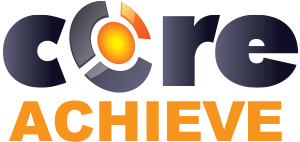Content Tagging
June, 30 2016
Other posts:
Enhancing Team Dynamics for Effective Group Decision-Making with LMS Integration
Organizations increasingly rely on collaborative efforts to solve complex problems, innovate, and adapt to change, but how do we ensure that collaboration is happening.
Maximizing Small Business Potential with Training Technology
Training technologies can push small businesses ahead of their competitors, but what are the factors that go into choosing the right technology?
Unlocking Employee Potential: The Transformative Benefits of an Interactive Learning Management System (LMS)
Interactive training allows for unlocking employee potential, but how is it done?
Building a Robust Sales Pipeline with Training
Every organization wants a streamlined sales pipeline, but building one requires a series of interlocking activities with one of the most important being training.
Strategies for Adapting In-Person Training to Online Platforms
Online training is one of the most flexible ways of delivering training across organizations, but how do you even begin to adapt in-person training into online?
Time Spent Now on Content Tagging Will Reap Benefits Later
For those of us trying to live in the moment, the temptation is always there to prioritize that which will bring the biggest bang for the buck. . . right now!
Content curators are no different. In their excitement to add the latest piece of hot content to their blog, website or learning system, they often fail to spend sufficient time describing, tagging and otherwise cataloging the data they’re adding. And, that can be a big mistake.
Adding descriptions, tagging and otherwise describing your content is the very best way to ensure that your content is available, in a meaningful way, to future consumers, long after the initial excitement and relevancy of your new content has worn off. Tags and other descriptors, known as metadata, are often unseen, or at least unnoticed by the reader as the content is being consumed. But, they offer the best, and often the only way, for readers to find information after it has been published.
John O’Donovan, CTO of the Financial Times, said it best in a recent interview with Ideo. “Metadata is fundamental to delivering business and customer value through content. People who use metadata to categorize their content will have the advantage over competitors who don’t have the mechanisms to expose relevant content and serve it to readers.”
Adopt a Metadata Strategy That Works
There are three things you should do to ensure that your metadata strategy can be successfully deployed to allow consumers to find your content, after it has been published:
Adopt a Taxonomy That Works for Your Readers
A taxonomy is the way in which content for a particular audience is organized and understood. It is this taxonomy that will be used to define the standard tags and descriptors applied to your content. Make sure your taxonomy is appropriate to the audience you serve. After all, engineers and poets understand the world differently, and use words differently to describe what they experience and know. Make sure your taxonomy speaks to the way your audience understands the world around them.
Adopt a Content Platform That Can Accommodate Your Taxonomy
Content platforms differ greatly in their ability to accommodate taxonomy. Some platforms offer very rudimentary capabilities, while other allow you to define taxonomy distinctions with great precision. Again, you must choose a content platform that serves your audience. Another important factor is ease of use. The very best taxonomy can be easily defeated by a content platform that is too hard to use.
Invest the Time
It’s important that everyone understand the importance of metadata and invest the appropriate amount of time ensuring that all content is properly defined. Metadata not only allows users to find data long after it has been published. It also allows users to see often un-considered connections between types of content, thereby allowing them to draw new inferences from different types of content that were never intended to work together.
Unfortunately, there’s no way to properly curate your content without spending a good deal of time doing so. A good taxonomy and a good content platform can help, but they’re no substitution for spending the time necessary for understanding, cataloging and describing your content, so that it pays dividends long into the future.

Leave comment: